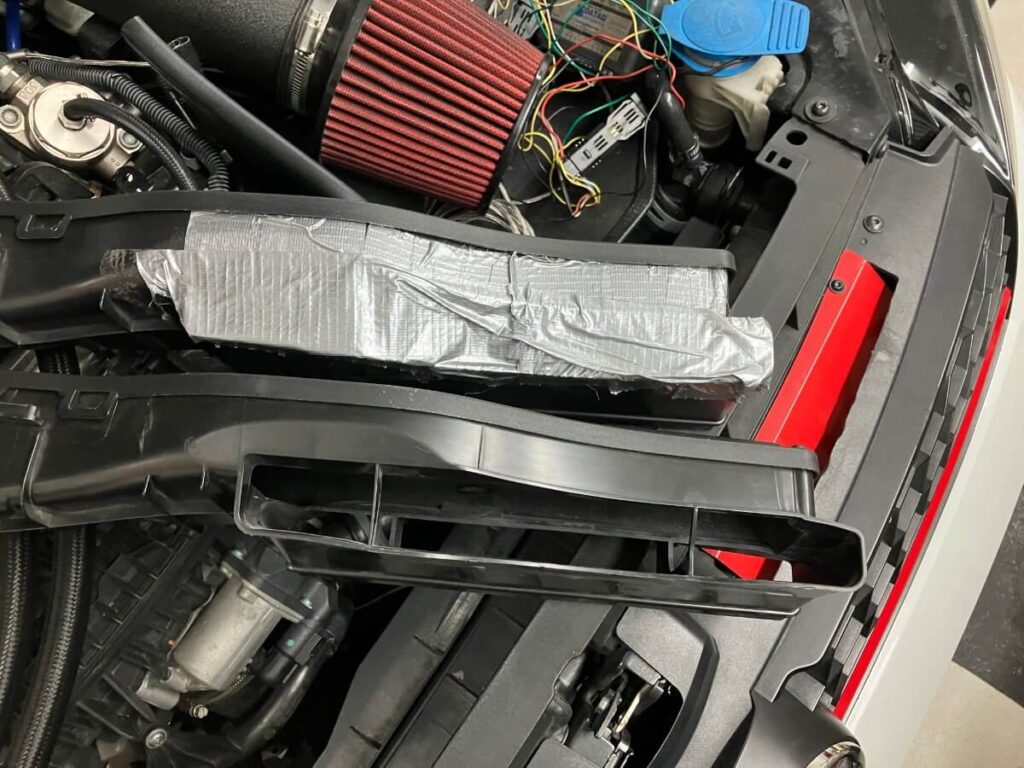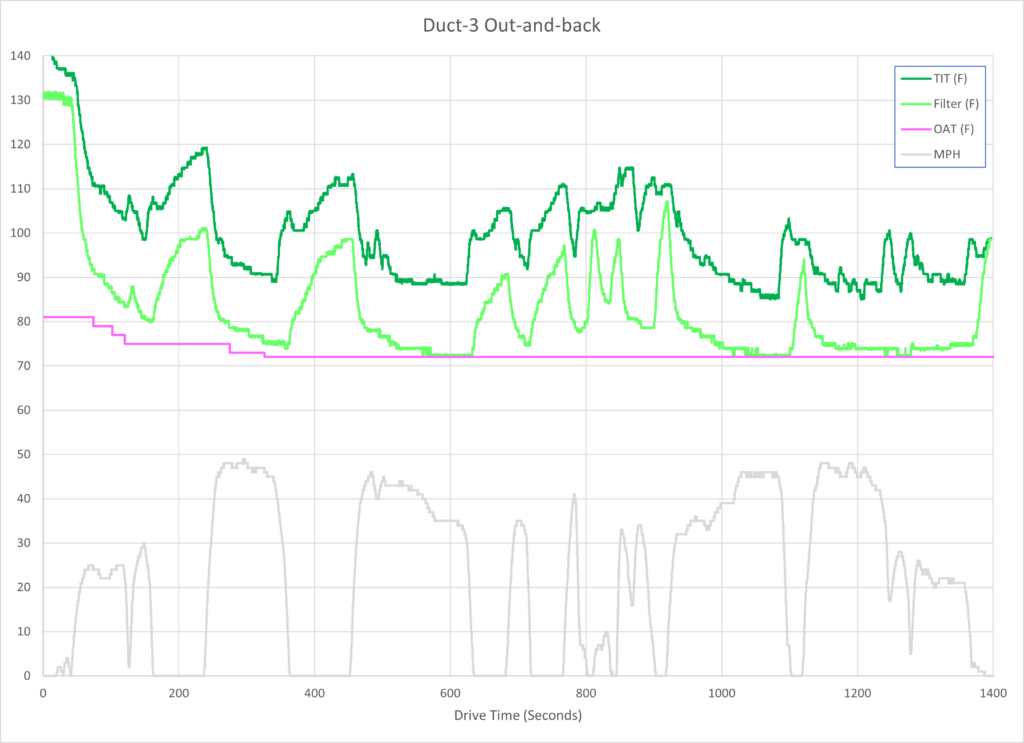Background:
In part 1 of this experiment, I measured air temperatures at the CTS intake air filter and inside the turbocharger inlet elbow using a completely stock Mk7 air duct (Duct-1) and then with a modified stock air duct (Duct-2). The modified duct had the front of the driver’s side opened.
The air temperatures with Duct-1 were recorded during full-throttle acceleration as well as routine driving. Duct-2 was only measured during routine driving.
In part 2 of the experiment, Duct-2 will be used during full-throttle acceleration to compare with the results from using Duct-1, and a third configuration (Duct-3) will be installed and routine driving temperature recorded.
The Duct-3 configuration is a further modification of the Duct-2. Duct-2 was open at the front of the driver’s side and the back of the passenger side. Duct-3 will have the passenger side rear of the duct covered so that engine compartment air cannot be drawn through the air duct.

Test Process:
Recording the full throttle acceleration with Duct-2 is performed following the same process as was described in part 1. The routine driving with Duct-3 is over the same route that the other configurations were recorded using.
Test Results:
The measurements taken for the entire acceleration session are shown below.

Similar to the out-and-back drive from yesterday’s post, the Air Filter temperature change is the most significant. Also apparent is a decrease in the turbocharger inlet air temperature.
The Duct-1 acceleration overview from yesterday is shown below.

The next chart is a close-up of the Duct-2 full-throttle acceleration pulls.

It was noted yesterday that the turbocharger inlet air temperature is increasing during the pulls more rapidly than the air temperature at the air filter.
This remains the case with using Duct-2, although the rate of the temperature increase at the turbocharger inlet has decreased. This is a positive outcome.
Shown next is yesterday’s full-throttle acceleration data.

The next chart is the turbocharger wastegate duty cycle during the full-throttle acceleration. This gives an indication of how hard the turbocharger is working to meet the requested boost pressure level.

The variation of the wastegate duty cycle (WGDC) has decreased. Also, there is still an upward trend of the WGDC that correlates with the turbo inlet air temperature increase during successive pulls.
The overall trend with air Duct-2 is to lower the WGDC compared with Duct-1.
Similar to the measurements in Part 1, the IAT stays consistent during the pulls.

Duct-3:
The next configuration of the duct begins with the Duct-2 and adds a cover to the rear of the passenger side.

With the cover in place, the out-and-back drive is made to record air temperatures.

Compared with Duct-2 the differences under these driving conditions are minimal.

Conclusions:
Turbocharger inlet air temperature during full-throttle acceleration was recorded while using a stock air duct with the driver’s side open.
Compared with the completely stock air duct test in Part 1 the turbo inlet air temperature increases more slowly with Duct-2, and the turbocharger wastage duty cycle is also reduced.
Also noteworthy for this test session was the ambient air temperature is 13 degF greater than yesterday, but the turbo inlet temperature is slightly cooler during the pulls.
A third configuration is introduced that uses a cover over the passenger side, rear of the air duct.
During the lower airflow out-and-back drive minor differences were noticed with Duct-3 versus the same drive using Duct-2.
Next:
The next experiment will be with Duct-3 making full-throttle acceleration pulls.

An interesting thing to note w/r to the right side pass-thru duct….on other VW models, this has a flapper. I have an Atlas and the pass-thru duct has a flapper on the back the acts like the blanking plate many of use/you are simulating. At low speeds it should be closed but as air flow through the duct increases and overcomes the weight of the flap it will be open. So at low speeds around town you are not getting the potential for warmer engine compartment air into the intake but at high speeds you have pass thru. Just something to note. Clearly some engineering went into that design. The other interesting thing to me w/r to this has always been the online discussions of whether that pass thru helps keep oil temps lower with more air flow directed at the oil filter housing…I would say no but show me the data right? It would be heavily dependent on vehicle speed. I note some aftermarket intakes that include a front duct have it closed off (my Unitronic intake is this way) while others have it open and state why…can’t recall now which is that way.
That’s an interesting alternative to the standard Euro plate and the duct tape that I’m using. I did measure air temperature in the engine compartment once and didn’t think the difference was very large.
https://mygolfmk7.com/2020/05/underhood-temps-near-oil-filter/